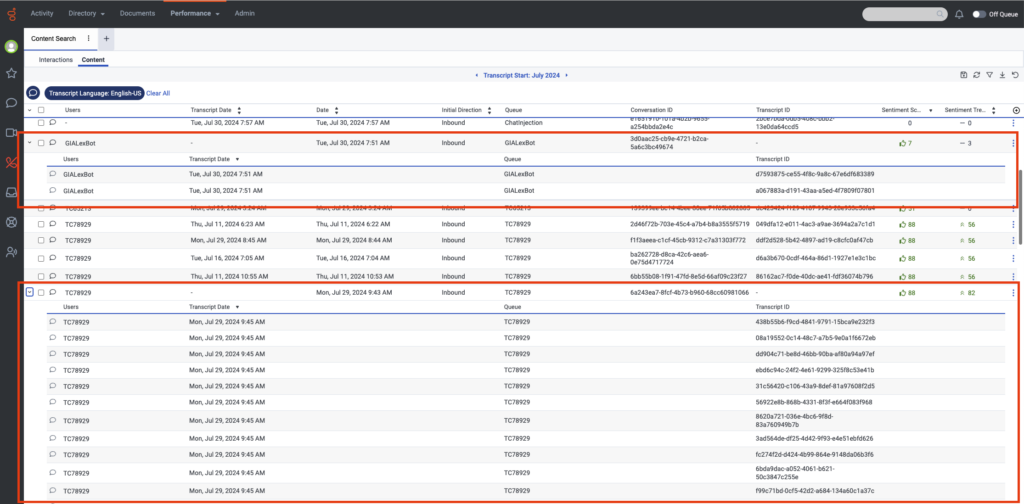Genesys Cloud
Enhanced Genesys Cloud content search view
| Announced on | Effective date | Aha! idea |
|---|---|---|
| 2024-08-12 | 2024-12-16 | Aha! link |
In a future release, Genesys Cloud will improve the Content Search view by displaying a single record for each unique interaction, rather than multiple records. This enhancement aims to provide a more consistent and streamlined reporting experience. Previously, each transcript from a conversation appeared as a separate record.
Key changes
One record for each interaction
- Users will now see one main row that represents each unique interaction. Related transcript details will be nested under this main row as subrows, allowing for clearer organization and easier access to all information that relates to the specific interaction.
Consistent Metadata Representation
- To/From – The main row will display the To and From information from the oldest transcript. The subrows will show these details for each individual transcript to avoid confusion from alternating addresses.
- ANI/DNIS – The main row will display the ANI and DNIS information from the oldest transcript.
- Duration – The main row will sum the durations of all transcripts, providing a total conversation time.
- Empathy score – A list of unique scores, sorted by oldest to newest, will be presented in the main row. Subrows will not display these scores.
- Sentiment score – Only one score will be shown in the main row, with subrows showing a placeholder (‘-‘).
- Topics/Queues – An expandable list of all unique topics and queues will be shown in the main row, with detailed listings in the subrows.
- Start date – The start time of the oldest transcript will be displayed, with individual transcript start times available in the subrows.
This change will eliminate duplicate entries for the same conversation and make it easier for users to manage and analyze conversations, offering a clearer overview and deeper insights into customer interactions.
For more information, see the Upcoming enhancements to content search community post.




